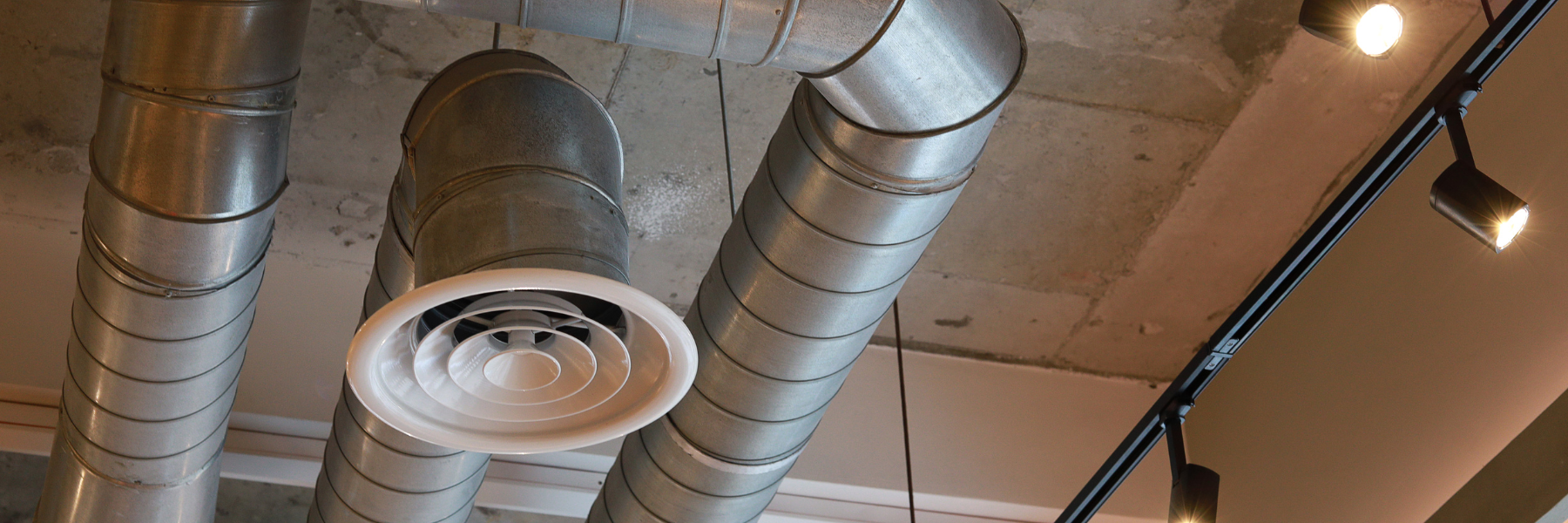Proper Ventilation Techniques for a Safer Laboratory
As part of our laboratory design services, we place a core focus on effective ventilation systems within laboratories of any kinds. Whether your lab is dealing with potentially harmful chemicals which need to be safely ventilated, or you’re simply concerned about keeping the space cool in the summer, a carefully-thought out heating and ventilation system is extremely important.
Why is Laboratory Ventilation So Important?
Laboratory ventilation serves a few important functions. It removes harmful airborne substances, controls odours, regulates temperature and humidity, and maintains a comfortable working environment. Labs can quickly become hazardous without adequate ventilation, putting researchers at risk and potentially compromising experimental results.
Key Components of an Effective Laboratory Ventilation System
A professional ventilation system encompasses these three key components.
General Ventilation
General ventilation forms the backbone of a lab’s air quality management. It involves the continuous exchange of indoor air with fresh outdoor air. This system should provide at least 6 air changes per hour for labs with hazardous materials, ensure consistent airflow throughout the space, and maintain proper air distribution to prevent ‘dead zones’. We consider these factors carefully when planning laboratory and prep rooms to maintain optimal air quality and safety.
Local Exhaust Ventilation
While general ventilation handles overall air quality, local exhaust ventilation targets areas where hazardous substances are used or produced. This includes fume cupboards, biosafety cabinets, and snorkel exhausts. These systems capture and remove contaminants at their source, preventing them from spreading throughout the lab. Expert lab design solutions should help you determine the best placement and type of local exhaust systems for your specific needs.
Fume Cupboards:
Fume cupboards provide a controlled work area where hazardous substances can be handled safely. When designing commercial laboratories, Innova Design Group ensures that fume cupboards are positioned away from high-traffic areas and air supply vents exist, sufficient space around the cupboard for safe operation, and the cupboard’s airflow is balanced with the room’s general ventilation.
Best Practices for Laboratory Ventilation
These best practices are key to a well-functioning ventilation system.
1. Regular Maintenance and Testing
Even the best-designed ventilation system needs regular care. Implement a schedule for checking and replacing filters, testing fume cupboard performance, and inspecting ductwork for leaks or blockages.
2. Training and Awareness
See to it that all lab users understand how to use fume cupboards and other ventilation equipment properly, recognise signs of ventilation system failure, and report any issues promptly.
3. Balancing Energy Efficiency and Safety
Modern lab ventilation systems must strike a balance between safety and energy efficiency. Consider variable air volume (VAV) systems that adjust airflow based on demand, heat recovery systems to reclaim energy from exhaust air, and occupancy sensors to reduce ventilation in unoccupied areas. Lab planning and refurbishment services can help you implement these energy-saving measures without compromising safety.
Common Ventilation Challenges in Laboratories
Ventilation challenges typically fall into these three areas.
1. Cross-Contamination
Improper air circulation can lead to cross-contamination between different lab areas. To prevent this, maintain negative pressure in areas with hazardous materials, use airlocks or buffer zones between different lab spaces, and maintain proper directional airflow from clean to potentially contaminated areas.
2. Noise Control
Ventilation systems can be noisy, potentially disrupting sensitive experiments or communication. Solutions include selecting low-noise equipment, using sound-absorbing materials in ductwork, and properly isolating mechanical equipment.
3. Space Constraints
In some labs, especially in older buildings, space for ventilation equipment can be limited. An ideal scenario is to create efficient laboratory spaces that maximise available rooms while meeting all ventilation requirements.
The Future of Laboratory Ventilation
As technology advances, so will ventilation techniques. We are seeing exciting developments in smart ventilation systems that adapt to real-time air quality data, integration of ventilation controls with laboratory information management systems (LIMS), and computational fluid dynamics for more precise airflow design. We will continue prioritising staying at the forefront of these innovations to provide our clients with cutting-edge ventilation solutions across the commercial and educational sectors.
Enhancing Lab Safety with Professional Ventilation
Proper ventilation creates a safe, comfortable, and productive environment for groundbreaking research to happen. Whether setting up a new lab or upgrading an existing one, paying close attention to ventilation is essential. This is where we, as laboratory specialists with over a decade of experience, can help.
At Innova Design Group, we create optimised lab environments prioritising safety, efficiency, and research outcomes. Our laboratory ventilation solutions offer these key advantages:
- Tailored Solutions.
- Cutting-Edge Technology.
- Compliance and Beyond.
- Integrated Design Approach.
- Energy Efficiency.
- Scalability.
- Expert Support.
By working with us for your laboratory ventilation needs, you’re gaining a partner committed to the success and safety of your research endeavours. Our solutions create an environment where innovation can thrive.
Contact us to work with you in creating a well-ventilated, safe, and efficient laboratory space that supports your current research goals and adapts to your future needs.


